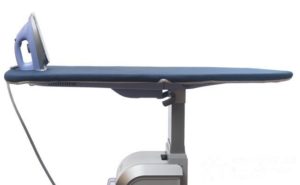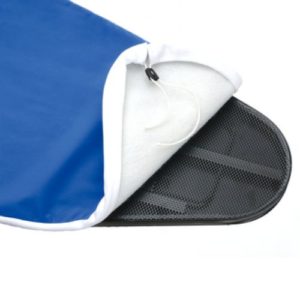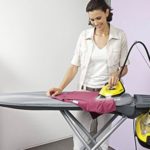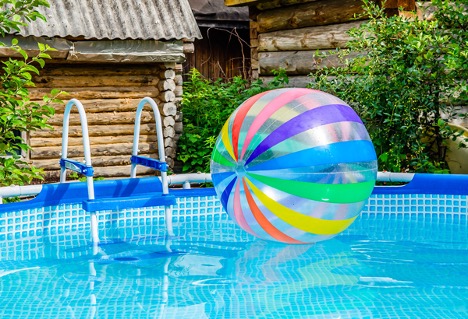How to choose an ironing board for your home
The ironing process is perhaps one of the most monotonous and boring. Ironing usually involves a large pile of washed laundry, and you have to stand for an hour doing a monotonous task. It’s good if the best participants help with this - a good iron and a properly selected ironing board. Let's look at how to choose an ironing board for your home below.
The content of the article
Types of ironing boards - which one to choose?
It would seem that what could be unusual in a standard ironing board? But in fact, there are several types of this item:
- Floor-standing.
- Tabletop.
- Transformers.
- Built-in.
 Each of the models has its pros and cons. For example, the most popular floor-standing used to have several height levels, but now they are produced with a more “smart” regulator that will smoothly adjust the height to a person’s height. Such models have good stability, a wide surface, often a removable cover, usually have a stand for the iron and attachments on legs that protect the floor from scratches. But the weight of these boards is often great, and when disassembled they can take up half the room.
Each of the models has its pros and cons. For example, the most popular floor-standing used to have several height levels, but now they are produced with a more “smart” regulator that will smoothly adjust the height to a person’s height. Such models have good stability, a wide surface, often a removable cover, usually have a stand for the iron and attachments on legs that protect the floor from scratches. But the weight of these boards is often great, and when disassembled they can take up half the room.
Tabletop models, as the name suggests, are installed on a table and have low legs, up to 15–20 cm. These boards have a slightly smaller working surface, but enough to iron clothes.Of course, you will have to tinker with bed linen or curtains. The advantages of this model include compactness, lightness, and mobility.
Tip: modern floorboards can be successfully equipped with additional functions - dryers, laundry baskets. It's convenient and practical.
Built-in ironing boards are perhaps every woman's dream. They can be part of the interior or hidden from view; you don’t need to look for free space to install them. The main disadvantages of such devices are their high cost, they are always fixed in only one place, and the inability to add other functions - a dryer or basket.
Selection criteria
It is very difficult to choose an ideal board in all respects, no matter how trivial the task may seem at first glance. If it is a board with a wide and comfortable surface, it will be heavy and bulky. As soon as a device is selected for its lightness, it will be necessary to sacrifice either the size of the working panel or the strength of the material of the entire structure. Complete compromises, but you can come to the best and most convenient indicators.
Tabletop parameters
When choosing the size of the tabletop, you need to start from the following factors:
- How often will the board be used?
- How much laundry and what size will be ironed on it.
- How much space in the house can be allocated for a disassembled ironing board?
Having decided on these questions, it will be easier to choose the required size. Manufacturers do not adhere to 1–2 parameters, but provide the following sizes to choose from:
 110*30–120*38 cm are the classic sizes of conventional boards;
110*30–120*38 cm are the classic sizes of conventional boards;- 130*35–150*45 cm – larger models, usually modern;
- 130-35 is the standard size for transformable boards that are “hidden” in chests of drawers or cabinets;
- 70*30 cm is the usual size for desktop options; they, as already mentioned, are the most compact.
Dimensions for recessed boards will, of course, be customized to suit your requirements. In addition to the size of the countertop, you need to understand what material it is made of. The following options may be offered:
- Chipboard, plywood, MDF - pressed wood boards. For strength, the slabs are made thicker, and this entails an increase in the weight of the entire board. Like any wood, such countertops do not tolerate contact with moisture well and can then delaminate.
- Metal – it can be aluminum or steel. The first one is light in weight, but can bend. Steel is heavier, but as a result of interaction with steam and moisture, the corrosion process can begin.
- Plastic – it is especially important that it is heat resistant. Such countertops will have holes to release excess moisture, and the plastic itself is durable and lightweight. If you come across a model with a heat-reflecting tabletop, ironing will be much easier. True, this will also increase the price of the board.
- Metal mesh is a durable and high-quality material for the countertop, and will allow moisture to pass through perfectly.
IMPORTANT: most often women are involved in installing the board, so the weight of the tabletop and the base of the structure are a very important parameter, even if at first it seems that this is not the case.
Coating
The backing on the tabletop and the cover are responsible for the ideal glide of the iron and thorough ironing of things. A low-quality cover can not only “move” off the surface, but also damage clothing. Good cases are made of high-quality material, and they can be of the following types:
 Cotton fabric is the cheapest option for a cover. Unfortunately, the “fun” colors of these cases can leave marks on clothes, and in general the case is not durable.
Cotton fabric is the cheapest option for a cover. Unfortunately, the “fun” colors of these cases can leave marks on clothes, and in general the case is not durable.- Canvas is the best option for the material; it will allow you to “hold” the clothes on the board and will not leave marks or stains; however, if the iron temperature is too high, burnt spots may remain.
- Synthetics with heat-resistant properties - such covers are equipped with branded board models. The fabric is durable, high quality, and can sometimes reflect heat.
- Carbon fiber is the newest type of material, with a lot of useful properties - it reflects heat and does not allow steam to pass through, which harms the countertop. With this coating you can easily iron even linen products.
At first glance, when choosing a board in a store, it will seem that there is no difference what the backing will be made of. However, not every material can withstand constant exposure to heat and steam. What looks perfect when you buy it may disappoint after just a few months of use. What substrates can be made of and what kind of performance can be expected from them:
- Sintepon is the cheapest and most short-lived stuffing. It is guaranteed to change its smooth surface and complicate the ironing process.;
- Foam rubber also has low cost, low density and appropriate quality.
- Batting is an elastic filler, but it does not easily tolerate moisture and accumulates it in itself. If you choose this padding, the tabletop should be perforated and, preferably, plastic.
TIP: when choosing a cover, it is important to pay attention to the way it is attached. As a rule, the cover should be removable, and the elastic bands or rivets that secure it to the tabletop should not fall apart after the first wash.
If a board with a wooden tabletop is used, its cover can be nailed. In such cases, it is better to purchase an additional cover of the same size and use it on top of the main one - then it will be possible to wash it.
Height
Considering that people, by their physiology, do not have the same height, and the ironing process can be lengthy, the boards are equipped with height regulators. It can be adjusted in two ways - using a smooth mechanism and a step mechanism. The smooth one has the advantage that it can be adjusted individually to any height. True, the cost of such a board will be higher, and the mechanism may become loose. Step adjustment is considered more reliable - 3-5 height levels will be offered here.
IMPORTANT: when choosing a board with stepwise height adjustment, it is important to pay attention to the quality of the fasteners and bolts.
Additional functions
In addition to the standard options for choosing an ironing board, some models can offer amazing additional features that you will immediately want to have. When choosing a good ironer, pay attention to them. Here are some of the “bonuses” that expensive models have:
- Pressurization for the cover - air is supplied from the inside and forms a layer. This function is convenient for steaming delicate areas and thin fabrics, and unnecessary creases or folds will not be created nearby.
- Air suction – by putting the fan in reverse mode, you can make clothes “stick” to the board, which will make it even better and easier to iron. At the same time, excess moisture is also removed, so the clothes will remain without streaks and wet spots.
- Heating the countertop allows you to cope with the most “unruly” materials.

Such “options,” of course, immediately affect the price tag of the ironing board. But you can get by with simpler but useful additions:
- Iron stand.
- Socket built into the board.
- Clip for fixing the extension cord.
- Compartment for ironed linen.
- “Sleeve” for ironing sleeves.
Whether the ironing board has these functions or not is not so critical. It is much more important to choose a comfortable model that is suitable in weight, surface size, height and convenience. Which model you will have is up to you.





